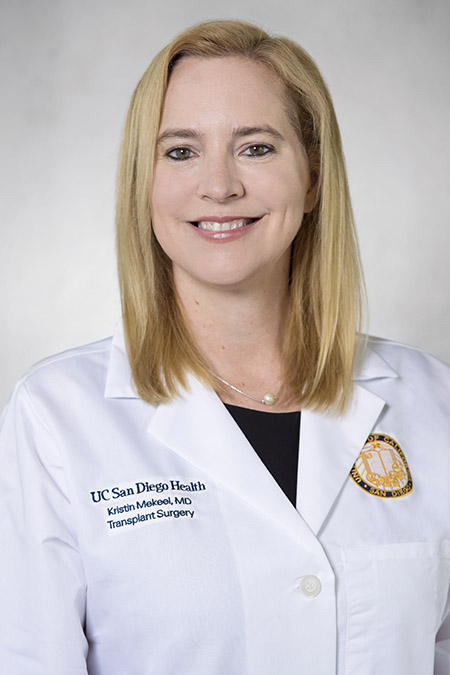UC San Diego Health program offers comprehensive care with excellent outcomes
Nationally, more than 12,000 people need a liver transplant, including more than 2,300 Californians. Patients can wait several years on the liver transplant wait list in California before receiving a donor organ; approximately 15 percent die while waiting.
As part of a national trial, UC San Diego Health’s liver transplant surgical team recently performed its first liver transplant from a donor after circulatory death, or DCD, utilizing a portable organ care system designed to more closely mirror the human body. The procedure was a first in San Diego, and used a “marginal liver” — an organ that would otherwise not have been transplanted.
Organ donation is possible only when someone has died under certain medical conditions. Donation after Brain Death occurs when a donor has experienced a severe irreversible neurological injury resulting in brain death. These donors’ cardiac circulation and respiration continue to function through medical measures, such as mechanical ventilation or medications. In cases of DCD, the donor’s cardiac circulation and respiratory functions stop first. After physicians have determined the patient has no chance for recovery and the family has decided to withdraw life support, the option of DCD is considered.
Although DCD livers are currently used for liver transplant only select organs can be used. “The use of the warm perfusion pumps would allow the expansion on the use of potential DCD donor organs and lives that can be saved,” said Kristin Mekeel, MD, chief of Transplant and Hepatobiliary Surgery at UC San Diego Health. “It could be a game-changer.”
Standard transplant protocols involve transporting donor organs in a cold preservation solution between donor and recipient to minimize tissue damage, but the process is tightly constrained by time. Using the portable pump system resuscitates the liver and perfuses it with warm blood and oxygen, allowing it to continue to function normally
“Data show organs have better preliminary function, less ischemic damage and patients have less time in the intensive care unit with an earlier discharge when they receive livers that have been pumped when compared to non-pumped livers,” said Gabriel Schnickel, MD, surgical director of liver transplantation at UC San Diego Health.
Liver transplant experts at UC San Diego Health provide comprehensive and innovative treatment for people with end-stage liver disease due to chronic liver disease and acute liver failure. Some key stats:
- Since 2018, liver transplant volume at UC San Diego Health has grown 36 percent, ranking the program #5 in California and #36 in the United States
- Wait list mortality rate of 9.4 is well below the expected 12.4
- The observed 1-year patient survival (92.37%) and graft survival (94.94%) are both above expected and national averages
- UC San Diego Health is only transplant program in San Diego to offer HIV+ to HIV+ transplant through the Hope Act Trial, HCV+ to HCV- transplant and complex multi-organ transplants, including liver-heart and liver-lung.
Experts available:
Kristin Mekeel, MD, chief of transplant and hepatobiliary surgery
Gabriel Schnickel, MD, surgical director of liver transplantation
###


